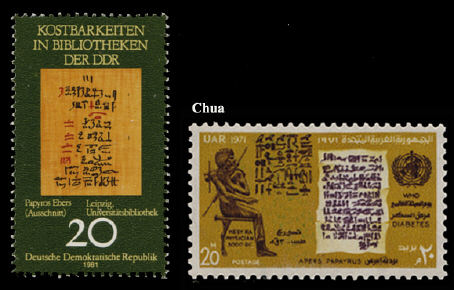| Ancient
Ophthlamology
|
|||
 |
|||
The medical knowledge of ancient Egypt is preserved in papyri written in hieroglyphs.There areEast Germany (1981) Part of the Ebers Papyrus from Leipzig University. several such papyri and they are all named after the Egyptologists who discovered them. The most famous is the Ebers Papyrus discovered in Luxor. It is the largest and the most complete papyrus. It is a roll 20 m long and 30 cm high; the text is distributed in 108 columns of 20 to 22 lines each. It contains 877 recipes concerning a great variety of diseases or symptoms. There are over 30 entries related to ophthalmology. Examples of the ophthalmic treatment include trichiasis “Another, not to let a hair grow into the eye after it has been pulled out: Terebinth resin … It can not grow again”; and night blindness ' poor sight at night cured with crushed ox liver'. The Ebers papyrus is stored in the library of Leipzig Unviersity. |
|||
|